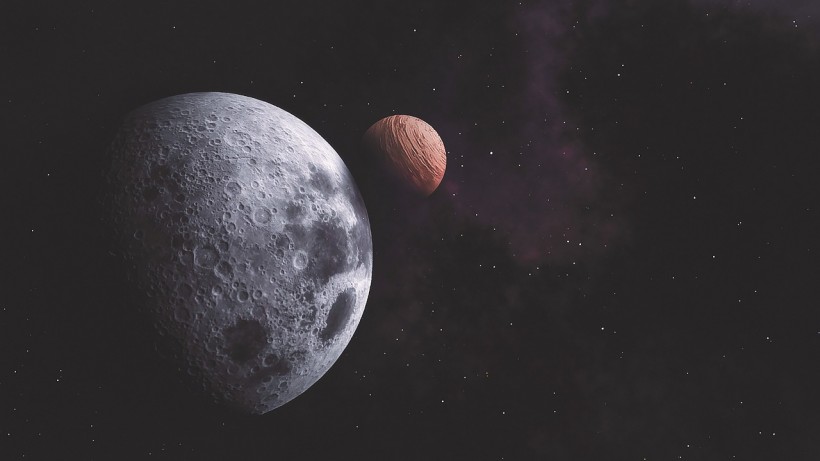It is time to take a look at the night sky as the Moon will eclipse Mars during the lunar occultation tonight, January 30. According to Space.com, the Moon will pass in front of Mars during that time from Earth's perspective.
However, not everyone on Earth will be seeing the lunar occultation as only a small part of the planet will have the chance to the spectacular view. Although, there will still be a chance to see it via Griffith Observatory's online livestream for those who will not be able to witness it.

Moon Set to Pass in Front of Mars During Tonight's Lunar Occultation; Here's How to Watch
Moon Occults Mars on Monday Night
Astronomers and space enthusiasts are hoping for a clear night sky on January 30th and 31st this year to see the waxing gibbous Moon blazing close to Mars. But for some parts of the planet, the Moon will be covering much of the view of Mars tonight.
Astronomers refer to this phenomenon as the lunar occultation, which is likely to happen tonight as the Moon occults Mars. That means Earth's natural satellite will obscure or cover its closest planetary neighbor.
As per EarthSky.org, the Moon and Mars will be visible above the horizon for everyone on Earth at dusk on Monday. Then the occultation of Mars will begin on January 31 at 4 am UTC (10 pm on January 30).
Between January 30 to 31, the Moon will pass in front f the Red Planet as viewed from different parts of North America, the Caribbean, northern South America, and other locations.
Who Will See Tonight's Lunar Occultation?
For those who are in the viewing area, you will still need an exact time for when the lunar occultation can be visible in a specific location. In-the-Sky.org's occultation map has the exact information as to when Mars will disappear and reappear from across the globe.
Those living beyond the viewing region will witness the Moon and Mars glide past one other. Some locations will even get to see Mars play peekaboo along the Moon's cratered and rugged limb, while other areas may view Mars as close to the Moon as 2 degrees. It all comes down to location.
The specific locations that will witness the lunar occultation, include Mexico, and Central America, as well as Peru, Ecuador, and Brazil in northern South America.
In terms of timing, stargazers in Los Angeles can see the magnificent night sky display beginning at 8:35 pm local time during a time when Mars disappears behind the Moon. Space.com reports that it will reappear at 9:29 pm.
Meanwhile, those in Miami will see Mars disappear at 12:37 am local time and then reappear at 1:27 am. Stargazers should look at the west-northwest horizon to spot tonight's lunar occultation.
But these locations are not the only ones with the opportunity to participate in the interplanetary fun. The "graze route," a 13-mile-wide ribbon of the United States, will see Mars graze over the surface of the moon, slightly vanishing, then completely reappearing on the other side. Kanab, Utah, and Brunswick, Georgia are among the destinations along the grazing trail.
Night-sky observers in the northern United States and Canada may see Mars nearly brush the moon as it passes over it. Tonight's event can be viewed via a stargazing telescope or a pair of binoculars, although it is also visible to the naked eye.
RELATED ARTICLE: Lunar Occultation: Watch the Full Moon Moves Very Close to Mars This Week
Check out more news and information on Space in Science Times.














